#Archaic Greek art
Text

A figure holding two tridents stands between horses. The scene has been interpreted as ritual horse-sacrifice, though this is not certain. Ancient Greek pottery fragment in the Geometric style, dating to the Archaic period (8th century BCE) and located in the Archaeological Museum of Argos. Photo credit: Zde/Wikimedia Commons.
#classics#tagamemnon#Ancient Greece#Archaic Greece#art#art history#ancient art#Greek art#Ancient Greek art#Archaic Greek art#Geometric period#pottery#potsherd#Greek religion#Ancient Greek religion#Hellenic polytheism#vase painting#Archaeological Museum of Argos
229 notes
·
View notes
Text

Hand of a Kore holding a fruit, Attic workshop, 6th century BC, marble, Acropolis Museum, Athens.
3K notes
·
View notes
Text

Relief from Selinunte, one of the Greek colonies in Sicily, 6th century BCE. Two deities on a chariot, perhaps Demeter and Persephone (Hera and Athena or Helios and Selene have also been suggested).
Photo taken from here. I cropped it a bit.
194 notes
·
View notes
Text

Archaic Medusa
Got tired of seeing Medusa designed as a generic pretty woman but with snake hair. Also made a little height chart.
#greek mythology#ancient greek mythology#greek pantheon#medusa#gorgon#perseus and andromeda#perseus and medusa#gorgons#archaic#greek mythology art#Athena#athena greek mythology
45 notes
·
View notes
Text
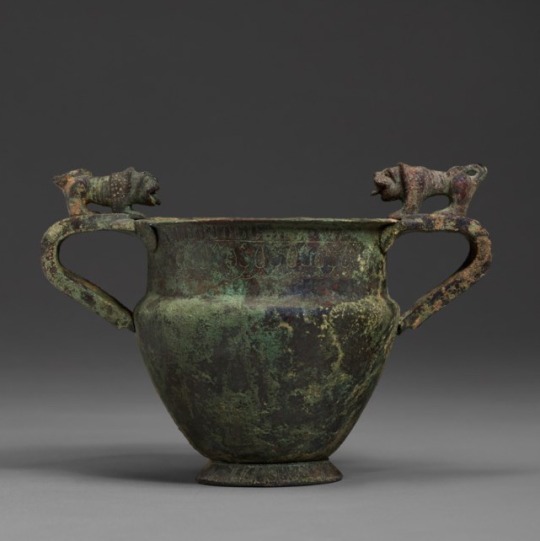
A GREEK BRONZE KANTHAROS
ARCHAIC PERIOD, CIRCA LATE 6TH-EARLY 5TH CENTURY B.C.
#A GREEK BRONZE KANTHAROS#ARCHAIC PERIOD#CIRCA LATE 6TH-EARLY 5TH CENTURY B.C.#ancient bronze#ancient artifacts#archeology#archeolgst#history#history news#ancient history#ancient culture#ancient civilizations#ancient greece#greek history#greek mythology#greek art
67 notes
·
View notes
Text
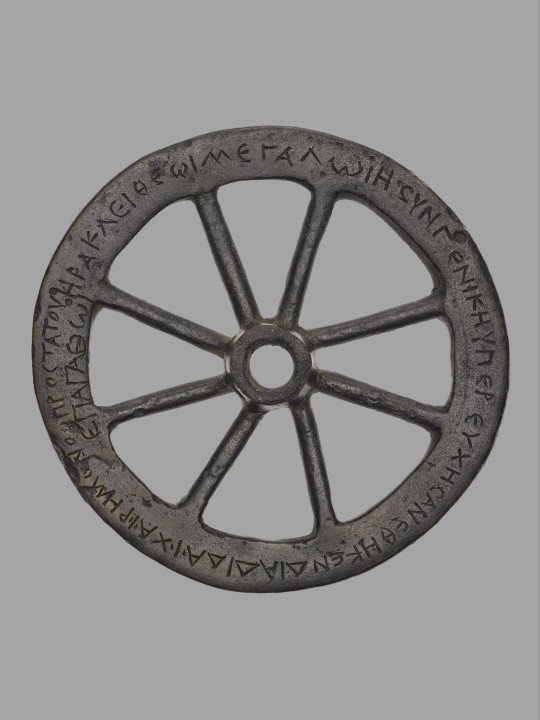
▪︎ Votive bronze wheel inscribed with a dedication to Herakles.
Culture/Period: Archaic Greek
Date: 525-500 B.C.
Medium: Bronze
#ancient#ancient art#history#museum#archeology#ancient sculpture#archaeology#votive#bronze#wheel#inscribed#Herakles#archaic#greek#ancient greek#525 b.c.#500 b.c.
521 notes
·
View notes
Text

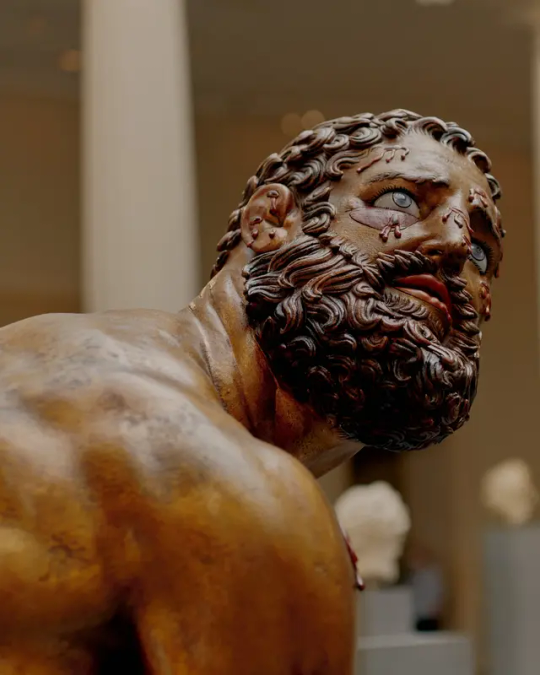
Detail of marble funerary stele of Phrasikleia Kore and a bronze statue from the Quirinal in Rome, the so-called Terme Boxer, reconstructed in color by Vinzenz Brinkmann and Ulrike Koch-Brinkmann.
Source: 🏺
#TESOROS 💍#the metropolitan museum of art#greek sculpture#archaic sculpture#hellenistic sculpture#<- initially#phrasikleia kore#the terme boxer
7 notes
·
View notes
Text
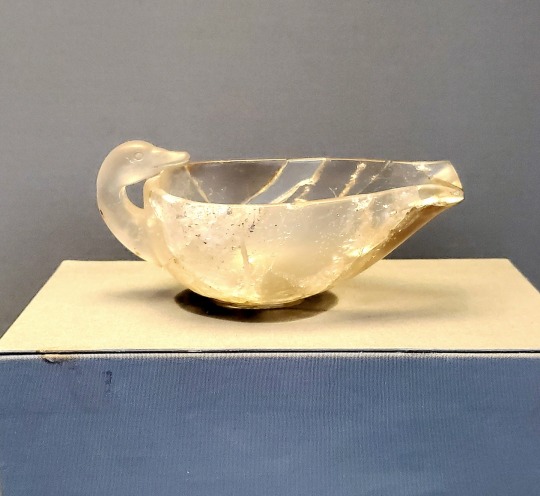
Duck-shaped vessel (kymbe), single piece of rock crystal (Minoan)
On display at the Museum of the Ancient Agora (Athens, Greece)
#isaac.jpg#art#archaeology#classical archaeology#greek#minoan#glassware#archaic#museum of the ancient agora
284 notes
·
View notes
Text

Archaic oinochoe
Athens
750- 700 BCE
Concentric Circle Group
British Museum
London, July 2022
#Greek#oinochoe#8th century BCE#Athens#ancient#art#archaic#vase#animals#horse#british Museum#my photo
102 notes
·
View notes
Text

This Kore was discovered in 1888 southwest of the Parthenon and was reassembled from four fragments. The head, right hand, parts of the hair and the folds on her right thigh were constructed from separate blocks of marble. Delicate and expressive, with her features highlighted with colour, this Kore is one of the most beautiful statues found on the Acropolis. Due to her almond-shaped eyes, which are strongly accentuated with paint, she is known as the "Kore with Almond Eyes".
She wears a long-sleeved chiton, with a short himation thrown over the top, which passes obliquely under the left arm, while secured on the right with small relief buttons. Her garments were richly decorated with painted rosettes, most likely in light blue, green and red colour and elaborate meanders painted in the same hues. The colors we see today are not the original hues and the intended blue of the chiton’s upper part, has oxidized through time and now appears as green. In her right hand the Kore would have held an offering to the goddess while with her left she was likely pulling aside her chiton to facilitate her step.
Her hairdo is the typical of the archaic Korai with her long hair falling on her back while three curled locks frame each side of her face and spill to the front. The reddish-brown colour we see today is a result of oxidation or constitutes the undercoat over which the final hue was applied. On her head she has a stephane with a colourful meander, part of which was made separately and then added, probably due to a repair, and on her ears, she wears round earrings decorated with red rosettes on a light blue background. The bronze stem projecting from the top of her head is a meniskos.
The Kore's features are highlighted with colour. Black is used for the eyebrows, the contour of the eyes and their pupils; brown for the irises; and red for the lips. The understatement of her expression, without the "archaic smile" of older Korai, is suggestive of early Classical art and the so-called "Severe Style".

Source: https://www.theacropolismuseum.gr/agalma-koris-i-kori-me-ta-amygdalota-matia
https://www.theacropolismuseum.gr/en/statue-kore-kore-almond-eyes
#kore 674#archaeology#art#ancient Greek#museums#archaic#statue#κόρη 674#Αθήνα#Athens#Akropolis#Ακρόπολη#interesting facts#almond shaped eyes#kore#κόρη#Greece#ancient Greece#Αρχαία Ελλάδα#academia
16 notes
·
View notes
Photo
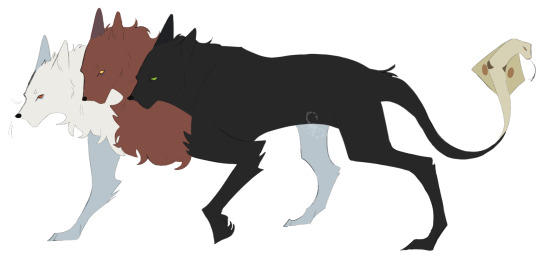
pupy
#Cerberus#Greek Mythology#based the design on how he's portrayed in some archaic vases#eg the red and white head#also yes i'm aware that's usually used to portray distance and background but i wanted to make it part of his design just for fun :]#my art
9 notes
·
View notes
Text

Tondo from the so-called Coupe à l'oiseleur ("Birdcatcher Cup"), an Ionian black-figure kylix made in ca. 550 BCE. The tondo depicts birds, a grasshopper, and a snake amidst lush vegetation, with a human or divine figure in the center. Some have argued that the shoots are meant to represent vines and that the central figure is Dionysos, but this is uncertain. Provenance uncertain (perhaps Etruria); now in the Louvre.
#classics#tagamemnon#Ancient Greece#Archaic Greece#art#art history#ancient art#Greek art#Ancient Greek art#Archaic Greek art#vase painting#kylix#tondo#black-figure#Louvre#Louvre Museum#Musee du Louvre
117 notes
·
View notes
Text

Athena, Attic workshop, c. 500 BC, marble, Acropolis Museum, Athens.
#sculpture#art history#athena#greek mythology#ancient greece#ancient greek art#mythology#mythological art#athens#acropolis museum#statue#marble#archaic period
136 notes
·
View notes
Text

Pov: you are Winkelmann and you are studying ancient Greek statues
#archaeology#winkelmann#greek archaeology#greek art#ancient greek statue#yes it's about the archaic smile the statues had on their faces guys
9 notes
·
View notes
Note
Hapo I have the most important request. Would you be so lovely as to draw Medusa in the Medusa palette? Pwease ÖwÖ
of course :3

in archaic art medusa is usually portrayed in a "running" pose so I thought I'd draw her on a jog (and waving to her pal Andromeda) (this may have been inspired by the fact that I got new leggings recently and i have feelings about how comfy they are... though they don't have little stars on them rip)
something something insert essay here about medusa usually being depicted in the clash of the titans style something something archaic art something something non-conforming 'monstrous' femininity something something just trying to have a good time and wish the haters actually did turn to stone when we are just trying to exist outside and enjoy some sunshine something something i couldn't figure out how to draw the WINGS BUT SHE HAS THEM OKAY maybe she just left them at home
#medusa#andromeda#greek mythology#colour palette#colour palette challenge#palette meme#medusa has a beard in archaic art DEAL WITH IT#once again hapo draws Gender Stuff because Stuff is Gender sometimes.#once again hapo braces self for people's expectations that medusa be pretty or sexy or something and im like#im not an authority on pretty or sexy but im sorry your view of it is so narrow blah blah bye#whys everyone gotta be pretty and or sexy when we just want to listen to some tunes and outrun our problems or whatever#classics#hapo art#hapo doodles#digital art#clip studio paint#be gnc do crimes whatever whatever
18 notes
·
View notes
Text
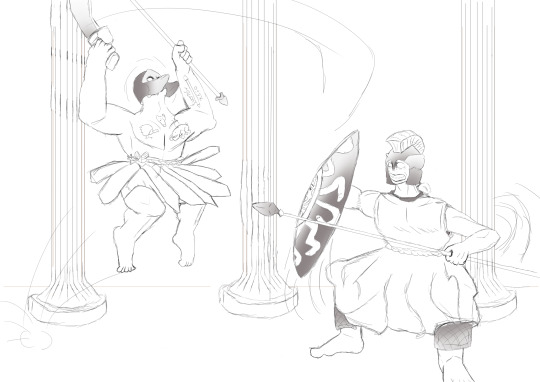
Dumb guy vs. Smart Lady
#monochrome#fanart#beginner drawing#ares#athena#oc#ancient greek#archaic greek#violence deptiction#kopis#spear#aegis art#aegis#Ares' tattoo says “Spear Arm” roughly
2 notes
·
View notes